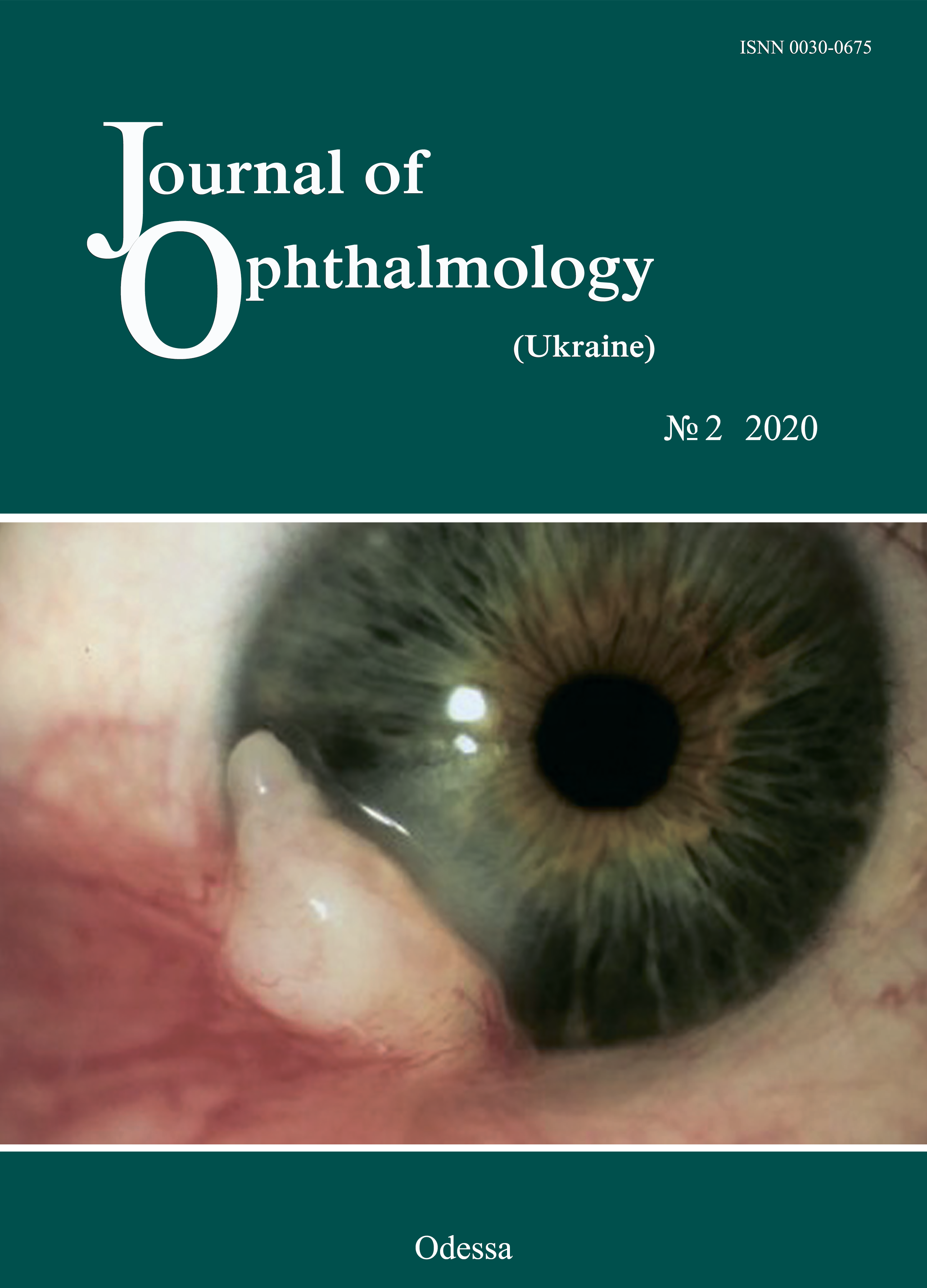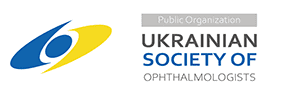Influence of persistently recurring pterygium on the optical interface of the cornea
DOI:
https://doi.org/10.31288/oftalmolzh202021216Keywords:
pterygium, recurrent pterygium, cornea, corneal topographyAbstract
Background: Pterigiym is a proliferative, degenerative and inflammatory disease developing due to pathological hyperplasia, vascularization of the epithelium and migration of abnormal limbal stem cells to the central cornea, and accompanied by profound changes in the structure of underlying tissue.
Purpose: To assess the influence of persistently recurring pterygium on the optical interface of the cornea using refractometry and corneal topography.
Material and Methods: Sixty patients (67 eyes) with persistently recurring pterygium were included in this study. Patients were divided in four groups based on the number of recurrences. They underwent visual acuity assessment, refractometry and computerized corneal topography to assess the optical interface of the cornea.
Results: We found significant differences in visual acuity, refractive errors and corneal topography indices among patients with persistently recurring pterygium with various numbers of recurrences. Our case follow-up demonstrated that permanent changes in the optical interface of the cornea developed with an increase in recurrences and persistence of growth of wing-shaped conjunctiva onto the cornea; these changes manifested as residual corneal astigmatism.
Conclusion: An increase in pterygium recurrences results in permanent impairments of the optic interface of the cornea; this requires developing advanced surgical techniques capable of preventing recurrence of pterygium.
References
1.Iakimenko SA. [Surgical treatment of persistently recurring pterygium] Zdravookhranenie Turkmenistana. 1983;11:41-4. Russian.
2.Legeza GV, Iakimenko SA, Manuh VF. [Surgical treatment of persistently recurring pterygium]. Oftalmol Zh. 1983; 4; 246-7. Russian.
3.Venger GE, Ulyanova NA, Gorianova IS. [Clinical and morphological features of various type of pterygium]. In: [Current aspects of clinical picture, diagnosis and treatment of eye disease. Proceedings of the Conference commemorating the 100th anniversary of the birth of N.A. Puchkovskaia]. Odesa; 2008. p. 27-8. Russian.
4.Petraevskii AV, Trishkin KS. [Pterygium: Etiopathogenesis, clinical picture and treatment]. Volgograd: Panorama; 2018. Russian.
5.Semenova EN, Gaisina GF, Suhov NA, Abdullin LL. [Outcomes of complex treatment for recurrent pterygium]. In: [Current problems of ophthalmology. Proceedings of the conference commemorating the 70th anniversary of the birth of Acad. M.T. Aznabaev]. Ufa; 2009; p. 543-5. Russian.
6.Trishkin KS. [Clinical and cytological types of pterygium]. In: [Current problems of experimental and clinical medicine. Proceedings of science and practical conference of young scientists and students]. Volgograd; 2012. p.120-1. Russian.
7.Usov VIa, Mal'cev EV, Kricun NIu. [ Clinical efficacy of surgical treatment of pterygium using high-frequency electrowelding of biological tissues for fixation of free limbal-conjunctival autograft]. Oftalmol Zh. 2015; 6; 6-12. Ukrainian.
8.Chan C, Liu YP, Tan D. Ocular surface changes in pterygium. Cornea. 2002; 21:38-42. https://doi.org/10.1097/00003226-200201000-00009
9.Kodavoor SK, Tiwari NN, Ramamurthy D. Long-term analysis of an unconventional way of doing double-head pterygium excision. Oman J Ophthalmol. 2019 Oct 11; 12(3):166-70.https://doi.org/10.4103/ojo.OJO_69_2017
10.Zhang LM, Lu Y, Gong L. Pterygium Is Related to Short Axial Length. Cornea. 2020; 39(2):140-5.https://doi.org/10.1097/ICO.0000000000002200
11.Drozhzhina GI, Troichenko LF, Ostashevskii VL, Kogan BM, Gaidamaka TB, Ivanovskaia EV. [Mistakes in the treatment of pterygium]. J of Ophthalmology (Ukraine). 2019;4;18-22. Russian.
12.Aliev A. [Features of corneal aberrations in pterygium]. Thesis for the degree of Cand Sc (Med). Moscow, 2008. Russian.
13.Aliev AGD, Ismailov MI. [Studying the effect of surgical treatment for pterygium on topography of the anterior corneal surface and refractive structure of the eye]. In: [Novel technologies of eye microsurgery]. Orenburg; 2000. p.142-2. Russian.
14.Nozimov AE. [Efficacy of combination surgery for persistently recurring pterygium]. Vestnik Bashkirskogo Gosudatstvennogo meditsinskogo instituta. 2016; 2;118-21. Russian.
15.Balashevich LI, Kachanov AB. [Clinical corneal topography and aberrometry]. Moscow: MNTK; 2008. Russian.
Downloads
Published
How to Cite
Issue
Section
License
Copyright (c) 2025 Э. Н. Билалов, А. Ф. Юсупов, А. Э. Нозимов, О. И. Орипов

This work is licensed under a Creative Commons Attribution 4.0 International License.
This work is licensed under a Creative Commons Attribution 4.0 International (CC BY 4.0) that allows users to read, download, copy, distribute, print, search, or link to the full texts of the articles, or use them for any other lawful purpose, without asking prior permission from the publisher or the author as long as they cite the source.
COPYRIGHT NOTICE
Authors who publish in this journal agree to the following terms:
- Authors hold copyright immediately after publication of their works and retain publishing rights without any restrictions.
- The copyright commencement date complies the publication date of the issue, where the article is included in.
DEPOSIT POLICY
- Authors are permitted and encouraged to post their work online (e.g., in institutional repositories or on their website) during the editorial process, as it can lead to productive exchanges, as well as earlier and greater citation of published work.
- Authors are able to enter into separate, additional contractual arrangements for the non-exclusive distribution of the journal's published version of the work with an acknowledgement of its initial publication in this journal.
- Post-print (post-refereeing manuscript version) and publisher's PDF-version self-archiving is allowed.
- Archiving the pre-print (pre-refereeing manuscript version) not allowed.












